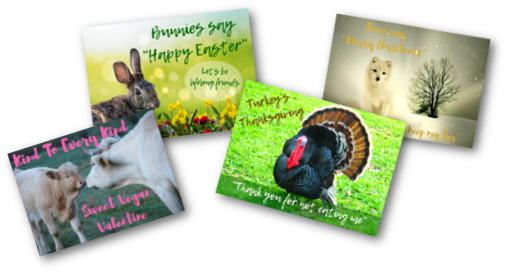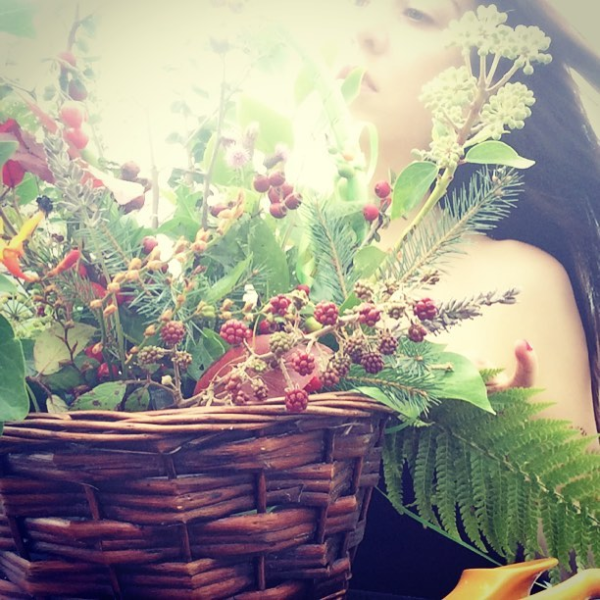 Hi there, it's Veronika!
Hi there, it's Veronika!
I want you today to meet Shiv, the countryside fairie who knows herbs and other wild plants really well so I've asked her to share some of her knowledge with us =)
Shiv calls herself The Naked Forager. Obviously, that's the first thing to ask about:
So “The Naked Forager” is a name I came up with a couple of years ago. It’s cheeky and a little provocative but really it’s a hint of my desire to be “naked” in terms of the way I interact with others and live my life. For me, the word naked also means honest, open and undisguised, or “undressed”.
Very much like Veronika Honestly =) So what do you do - what do you forage?
I started The Naked Forager Facebook page as a way of both channelling my enthusiasm for foraging and wild plants, and also demonstrating that foraging can be for everybody! I don’t believe that fashionable wild ingredients like samphire, wild garlic and truffles should be just for elitist chefs and hipsters. Once upon a time grandmothers, teachers and children alike would all share a common knowledge of wild food sources and be confident in their knowledge of the seasons and the ebbing and flowing of the natural world. Unfortunately, in the west, we have lost much of that connection and instead rely on foods that come wrapped in plastic.
I remember a lot of foraging during my childhood, also because I was living in the countryside. But it's not that easy to connect with nature in the city, I can see how the busy life takes one away from even trying to go out and enjoy the fruits of nature.
Of course, many of us live busy lives and don’t feel we can spend hours picking berries in the hedgerows, so it’s easy to dismiss foraging as an activity for those with more time on their hands. It’s not all or nothing though, and great satisfaction can be gained from learning just a few of the myriad of edible plants that probably grow just minutes from your doorstep, even if you live in the middle of a city. It’s certainly an eye-opener to many of the people I talk to that they are actually surrounded by edible and medicinal plants! It’s also a wonderful moment when people realise that they already know much more than they thought they did, and could already call themselves foragers! If you’ve ever picked blackberries as a child, rubbed a dock leaf on a nettle sting or gathered chestnuts in the autumn then you’re already off to a good start.
Exactly - even when I'm "the busy adult" now, I still enjoy going for a walk, pick up mushrooms (of course!), chestnuts, berries - especially blackberries, those are everywhere - and I know spots where wild raspberries grow, blueberries and even strawberries! I don't forage herbs often, so I hope I'll relearn what I forgot and learn also something new from you =)
One of my favourite plants to surprise people with is the dandelion.
We all know it as a weed that gardeners hate, and perhaps we remember the old fashioned “Dandelion and Burdock” drink, so we could deduce that it is safe to consume. But did you know that every single part of the plant, from the petals to the roots, is edible? I often dig up dandelion roots, roast them and grind them to make a gorgeous coffee substitute, sometimes mixing them with nettle root and cleavers for a more balanced flavour. This underrated plant is brimming with nutrients - calcium, iron, potassium, vitamins A, C and E as well as folate and vitamin B6.
It’s been used medicinally for hundreds if not thousands of years, but perhaps the most surprising thing about it is how many “look a likes” it has. Any decent wildflower guide will have several pages of plants that strikingly resemble the dandelion, and yet it is a flower that many people will be familiar with and be able to separate from the dozens of other plants with similar yellow flower heads and jagged leaves. Perhaps we don’t give ourselves enough credit for our natural ability to recognise distinctive but tiny differences in wild plants as an evolutionary survival mechanism.
A quick Google search will reveal a few easy dandelion based recipes, from dandelion “honey”, a vegan honey alternative that harnesses the beautiful golden colour of dandelion petals to create a wild honey substitute, to baby dandelion leaf salad and the aforementioned dandelion “Coffee”.
If you’re looking to try a few of these yourself, I recommend picking young, tender green leaves in spring, before the plant has flowered (they can be bitter as the season goes on) and harvesting the root in the autumn, when the plant is storing up its energy for the winter and so will have more substantial roots. Look for large basal rosettes as these will have the largest roots, and be prepared to spend a while scrubbing the dirt off at the sink! The petals make a colourful garnish and have sometimes been used as a “poor man's saffron”.
A word of caution with dandelions though; they are known to have a diuretic effect, so don’t drink too much dandelion tea before bedtime!
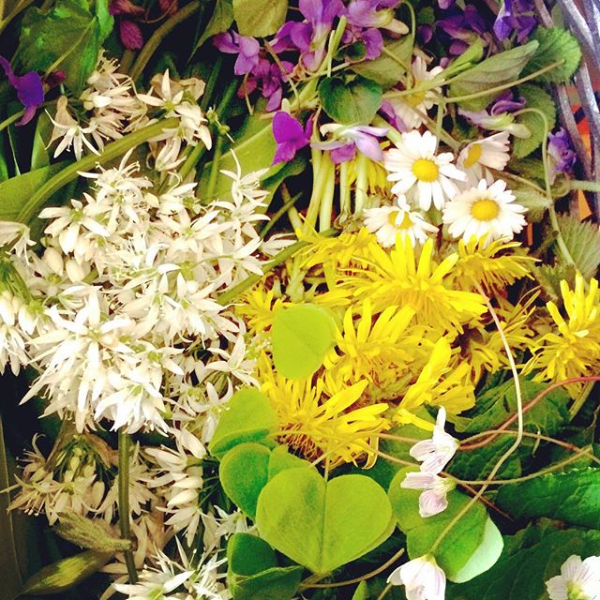
From The Naked Forager's Instagram: wild violet, daisy, dandelion, wood sorrel, wild garlic
I’m not a person who like rules, but if I had a Golden Rule of foraging, it would be to never put anything in your mouth unless you are 100% sure what it is!
This should really go without saying, but I often hear of cases where people have eaten some leaves, berries or even mushrooms, and then panicked because they were not 100% sure they were edible. I have been contacted by friends and members of the public-even chefs, who have mistakenly identified poisonous plants as edible ones! I know too well the temptation to try a new plant, especially when you really want it to match the tasty looking one in your guidebook, but please, always use common sense and err on the side of caution!
A code of conduct that I like to employ when foraging is to harvest sustainably. That may mean picking just the top two leaves when gathering nettles, to encourage more side shoots on the plant and ultimately benefit the plant’s growth, as nettles are so vital for many animals, especially insects. It may mean collecting elderberries from every third tree, leaving plenty for the birds, or it may mean not picking any at all sometimes.
Foraging sustainably is definitely something to keep on mind. Thinking about the plant itself as well as others who else may need to use the plant - be it bees, birds or even your neighbour who wants to forage too =)
Another way I like to forage sustainably is to make use of the invasive non-native species such as Himalayan Balsam, which grows in abundance by rivers.
I believe it was introduced to the British Isle around 1857, as an “exotic” species, and has since spread far and wide, threatening native wildflowers and completely taking over large areas of land. Despite being stunningly beautiful and rich in nectar, this plant is damaging ecosystems as it grows over 6 ft tall and prevents the light from reaching the seedlings of shorter native species. I make use of its nectar-rich abundance by collecting the flowers and making a sweet, floral syrup that is bright pink in colour. The kids love it on almond milk pancakes and have a few of the petals sprinkled on top for a garnish. The seeds of this plant are also edible and taste to me like sweet, fresh hazelnuts. The seed pods “explode” when ripe, showering seeds everywhere, which is one of the mechanisms this plant uses to spread too rapidly. The hollow stem can be used as a drinking straw, making this plant a favourite for kids entertainment on riverside walks!
Other non-native species I like to use are Japanese Knotweed, Fuchsia and Pineapple Weed, the latter of which I blend with Darjeeling Earl Grey to make a fruity tea that is really refreshing and floral. This particular blend of tea I called “A Midsummer Night’s Dream”, because I collected the last batch of pineapple weed on the midsummer solstice. Plus, I love Shakespeare, so I had to get a reference in there somewhere. Once I was happy with my final blend, I packaged up the tea and proudly labelled it. It’s now being sold in my local gift shop, “The Long Dock”, in Carrigaholt, co. Clare.
I also have a blend called “Witches Brew” which is a mellow combination of First flush Darjeeling and fermented blackberry leaves. It’s a kind of halfway point between tannin-rich black tea and fruity green herbal tea, so it’s both refreshing and punchy. The very small batches I make mean that I can’t reliably sell online at the moment, so I like to keep it local and have them for sale just a mile or two from where they were picked, blended and packaged. Hopefully, in 2020 I will be offering more products for sale, but my secret aim is to open a vegan streetfood truck, so I may be concentrating more on that!
That sounds very adventurous - I shall make my move and finally visit Ireland then to see it happening =)
My Facebook page, Instagram and website Naked Forager will be a good source of info on what’s happening and how things are coming along, so it’s worth checking in every now and then. Plus, I often update with recipes and tips on everything from making your own lip balms to recognising wild mints.
Shiv, could you, in the end, share something easy to forage for beginners?
My top 5 plants for beginners are:
Sloes - easy to recognise and pick, make sloe gin, whiskey or hedgerow syrup. Place the alcohol-soaked sloes in icecube trays and pour over melted dark chocolate, then set in fridge for an indulgent alcoholic treat once the sloe gin is made. Or, make sloe “Cheese” which is essentially a set jelly.
Brambles - not just the blackberries, but the leaves and even the stems, when young, are edible!
Hawthorn - this grows all over cities in parks, planting schemes and gardens. The bright red berries are edible out of hand and tasty in “hawthorn Ketchup” or sweet and sour sauce. In spring the blossoms are among the first to show and fill the air with a sweet nutty scent. They taste vaguely nutty and sweet.
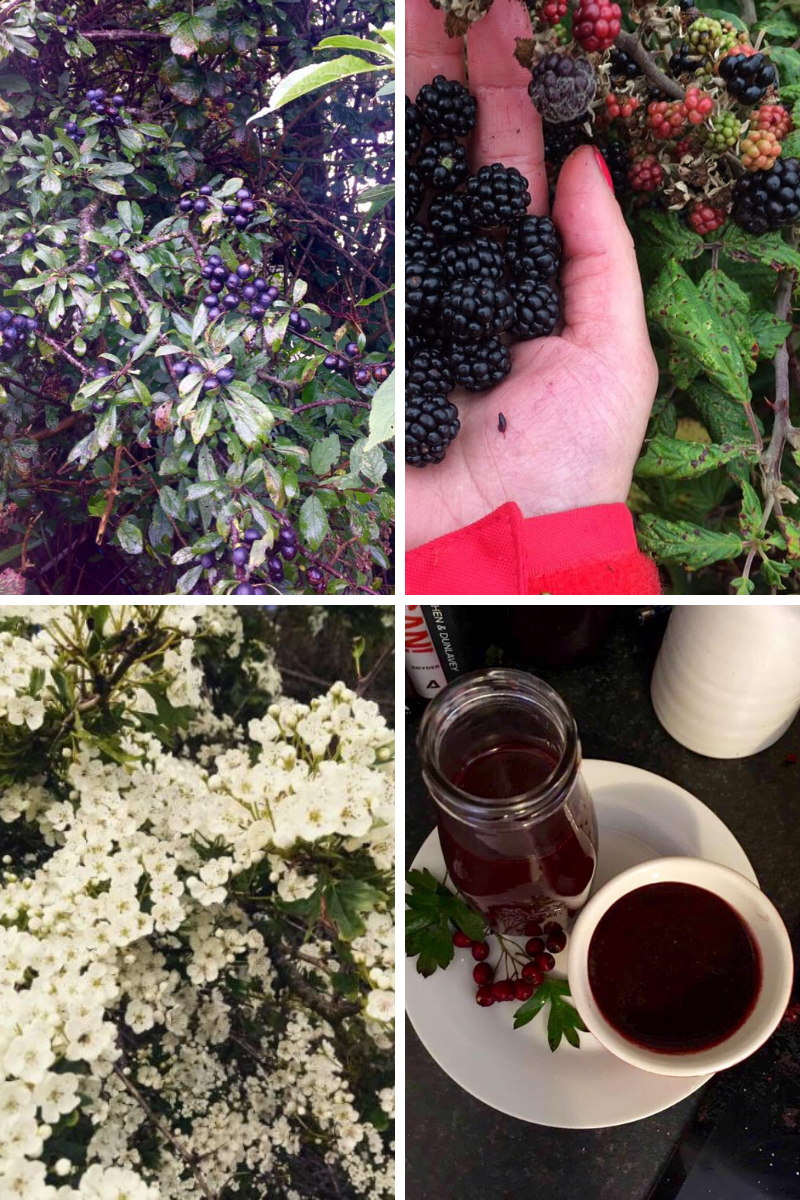
From top left: Sloes, growing on blackthorn bush/tree (Prunus Spinosa) and blackberries, brambles in the background (Rubus fructicosus)
At the bottom: Hawthorn blossoms (Crategus Monogyna) and hawthorn sauce made with fruits and leaves of the hawthorn
Mint - wild mint is easy to recognise due to the square stem, opposite leaves and pungent smell. Look by streams and riverbanks or roadsides. There are so many varieties as garden escapees hybridise with wild mints and I have found a reliable patch of chocolate peppermint growing by a riverbank!
Daisy - another we are all familiar with, the daisy grows in gardens, parks, roadsides and almost everywhere else! Easy to identify and all parts of the plant are edible. My tip is to freeze the flowers in ice cubes and float them in drinks for summer picnics or cocktails.
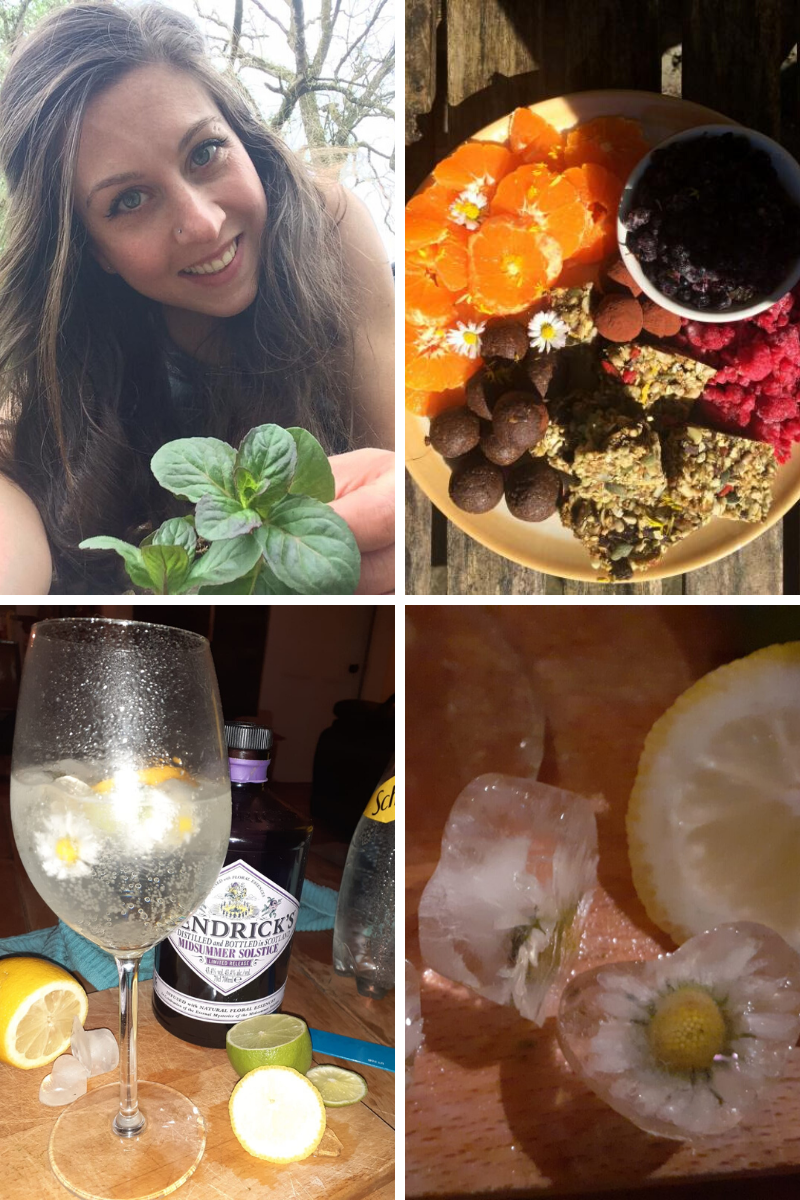
From top left: The Naked Forager holding a chocolate peppermint found growing by a stream; a cross between aquamint and spearmint, which hybridises with garden escapees (Mentha × Piperita) and daisies as a garnish (Bellis perennis)
At the bottom: Daisy ice cubes =)
Thanks, Shiv, I think that can be a good start for someone who wants to give foraging a go. The daisy ice cubes especially are amazing - it would never cross my mind before to freeze them like that =) I'm certainly intrigued to do more foraging then I normally do - especially forage beyond the fungi realm which is what we focus on with The Primary Consumer - but about that, perhaps some other time.
I'm fairly sure it's not the last time we've heard from The Naked Forager here but in the meantime - share with me in the comments what you forage and how you enjoy it!


